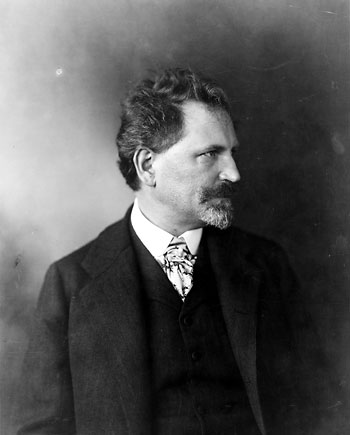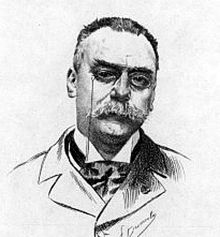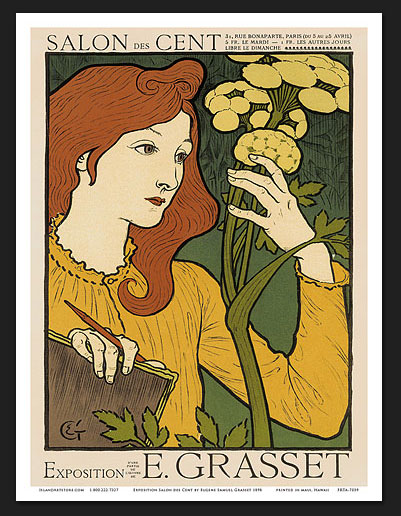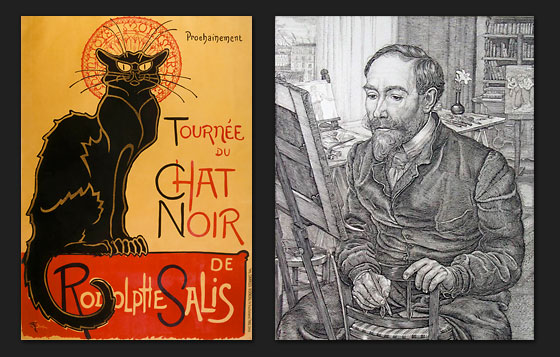The History of Poster Art over the last two Centuries. Part 3
…..continued from our ongoing exploration on the History of Poster Art over the last two centuries. In Part 2 of this Blog I introduced Jules Chéret, “the father of the modern poster” and his publication “Maitres de l’Affiche”. Next I want to focus on some of the artists that were featured in this publication that promoted the poster as an independent art form.
Alphonse Mucha, Eugène Grasset and Théophile Steinlen were influential poster designers of this generation, known for their Art Nouveau style and stylized figures, particularly of women. Advertisement posters became a special type of graphic art in the modern age. These three artists, along with many others, were part of a circle of artists whose art form transferred to magazines for advertising as well as for social and political commentary.
Alphonse Mucha (1860-1939)
 Alphonse Mucha was a Moravian (Czechoslovakia) painter of the late 19th and early 20th centuries. He started his career working at decorative painting jobs in Moravia, mostly designing theatrical scenery. His employer was very much inspired by his work and sponsored Mucha’s formal training at the Munich Academy of Fine Arts. Afterwards Mucha went to Paris for further studies. Mucha has a significant role in the Art Nouveau movement and created pieces that have achieved classic status. He was the creator of numerous paintings, illustrations, advertisements, postcards and designs which became an inspiration for many artists of his time. He invested many years of his life creating his fine art masterpiece, The Slav Epic. It contained twenty huge paintings that illustrated the history of the Czech and the Slavic people which was donated to the city of Prague in 1928.
Alphonse Mucha was a Moravian (Czechoslovakia) painter of the late 19th and early 20th centuries. He started his career working at decorative painting jobs in Moravia, mostly designing theatrical scenery. His employer was very much inspired by his work and sponsored Mucha’s formal training at the Munich Academy of Fine Arts. Afterwards Mucha went to Paris for further studies. Mucha has a significant role in the Art Nouveau movement and created pieces that have achieved classic status. He was the creator of numerous paintings, illustrations, advertisements, postcards and designs which became an inspiration for many artists of his time. He invested many years of his life creating his fine art masterpiece, The Slav Epic. It contained twenty huge paintings that illustrated the history of the Czech and the Slavic people which was donated to the city of Prague in 1928.
Though Mucha’s works were stamped outdated after his death, his works have now become something to look for inspiration for the illustrators and artists today.

Alphonse Mucha; JOB Cigarette Rolling Paper, Monaco- Monte- Carlo
Eugène Samuel Grasset (1845–1917)
 Eugène Samuel Grasset was a Swiss decorative artist who worked in Paris, France in a variety of creative design fields during the Belle Époque. He is considered a pioneer in Art Nouveau design.
Eugène Samuel Grasset was a Swiss decorative artist who worked in Paris, France in a variety of creative design fields during the Belle Époque. He is considered a pioneer in Art Nouveau design.
He studied drawing and in 1861 went to Zurich to study architecture. After completing his education, he visited Egypt, an experience that would later be reflected in a number of his poster designs. He became an admirer of Japanese art, which influenced some of his designs.
In 1877 Eugène Grasset turned to graphic design, producing income-generating products such as postcards and eventually postage stamps for both France and Switzerland. However, it was poster art that quickly became his forte. Some of his works became part of the “Les Maîtres de l’Affiche” publication including his lithograph, “Jeanne d’Arc Sarah Bernhardt.”
With the growing popularity of French posters in the United States, Grasset was soon contacted by several American companies. In the 1880s, he did his first American commission and more success led to cover designs for Harper’s Magazine. Grasset’s work for U.S. institutions helped pave the way for Art Nouveau to dominate American art.
At the Universal Exhibition of 1900 in Paris, the G. Peignot et Fils typefoundry, introduced the “Grasset” typeface, an Italic design Eugène Grasset created in 1898 for use on some of his posters.

Eugene Grasset (Salon des Cent).
Théophile Alexandre Steinlen (1859 – 1923)
Théophile Alexandre Steinlen was a Swiss-born French Art Nouveau painter and printmaker.
In his early twenties he was still developing his skills as a painter when he and his new wife moved to the artistic community in the Montmartre Quarter of Paris. Montmartre and its environs, was a favorite subject throughout Steinlen’s life and he often painted scenes of some of the harsher aspects of life in the area. In addition to paintings and drawings, he also did sculpture on a limited basis, most notably figures of cats that he had great affection for as seen in many of his paintings.
Steinlen became a regular contributor to Le Rire and Gil Blas magazines plus numerous other publications including L’Assiette au Beurre and Les Humouristes, a short-lived magazine he and a dozen other artists jointly founded in 1911. Between 1883 and 1920, he produced hundreds of illustrations, a number of which were done under a pseudonym so as to avoid political problems because of their harsh criticisms of societal ills.
Théophile Steinlen died in 1923 in Paris and was buried in the Cimetière Saint-Vincent in Montmartre. Today, his works can be found at many museums around the world including at the Hermitage Museum in St. Petersburg, Russia. and the National Gallery of Art in Washington, D.C., United States.

Théophile Steinlen’s iconic poster for the theater troupe “Chat Noir” designed in 1896. A portrait of the artist in his studio; engraving by Pieter Dupont (1901).
To be continued… thanks for visiting our blog, your feedback is appreciated.
Bernard Lassalle
bernard@classicvintageposters.com